Laying tiles has become common when constructing a new home or renovating a place. Tiling provides a fantastic look to the house and increases its value.
Suppose you plan to do DIY tiling projects; you must consider several factors to obtain a premium finish. One such aspect is leveling the subfloor before you start tiling.
Are you wondering whether tile adhesive can be used to level the floor?
Cheer up! We’ve got the answer in this blog!
Yes, you can use tile adhesive to level the floor. You can level the floor using tile adhesive that is 1mm to 12 mm thick or more.
Read further to learn more details about leveling the subfloor using tile adhesive.
Leveling the Subfloor
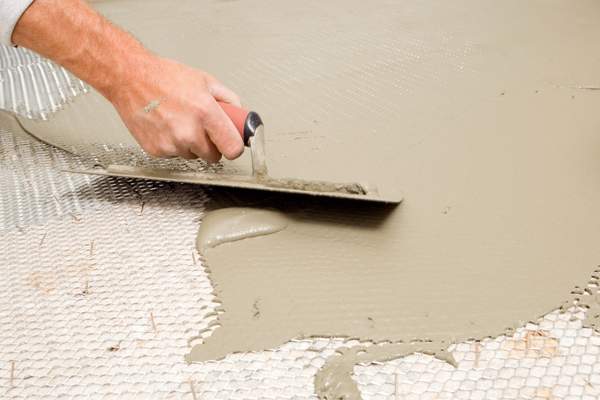
It is vital to make sure that the substrate is even.
If the surface is uneven or has cracks, you must level the subfloor before tiling. Some people intend to skip this step, but this will impact the final result of the tiling project.
Leveling the floor will prevent tiles from cracking during the installation process. Also, it will help to obtain a professional finish.
Using Tile Adhesive to Level the Floor
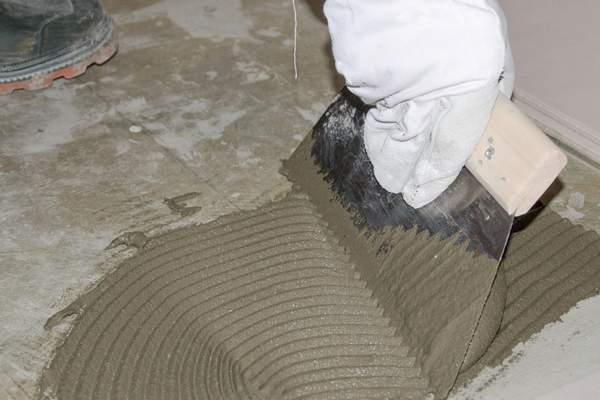
Most people ask whether they can use tile adhesive to level the subfloor. If you are also confused, let’s clarify the point.
You can use tile adhesive for leveling the floor under certain conditions. If the surface is mildly uneven, try leveling it with the tile adhesive.
Check the type of tile adhesive you will use for this purpose. You cannot use all the glue.
You must be able to use the selected adhesive with a maximum thickness of 12 mm. If so, you can use it for leveling the floor. There are also adhesives that you can lay up to 25mm thick.
In contrast, avoiding such glues for floor leveling is better if you use an adhesive that only applies a maximum of 6mm thickness.
Rapid Set Adhesive
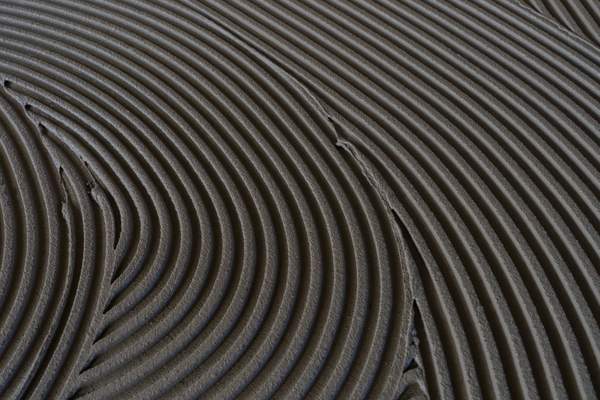
Using the Pro Rapid tile adhesive, you can level the subfloor. The maximum thickness of this glue is 12mm.
Hence, using a thin or thick layer of this adhesive will not cause much harm to the tiling project. Moreover, this adhesive is fast-curing, allowing the leveled surface to cure before installing the tiles.
Furthermore, we recommended leveling the floor using the appropriate method rather than any alternatives. This will produce guaranteed and long-lasting outcomes.
Leveling the Floor with Thin-Set Mortar
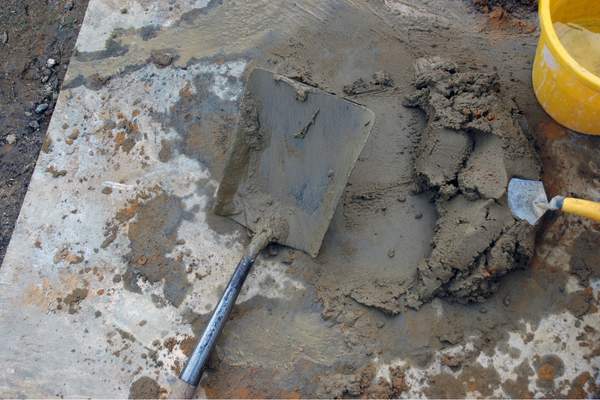
Imagine that you are using thin-set mortar to bond the tiles. Since the floor looks uneven, you plan to level it using thin-set mortar. Is it possible?
Most thin-set mortars have a maximum thickness of 6mm. If you use the bed mortar, it will have a thickness of 12 mm.
Anyway, using it to patch cracks and level the floor is not a good idea, although it is possible. The main reason for this is when you apply an overly thick layer of mortar. It will become unstable.
The ideology is the same, even if you do it in layers. This means you level the surface using the thin-set mortar. After it cures well, apply the thin-set again and install the tile. Once the new layer cures, it becomes one with the previous layer and eventually turns unstable.
Say No to Leveling the Floor Using Tile Adhesive
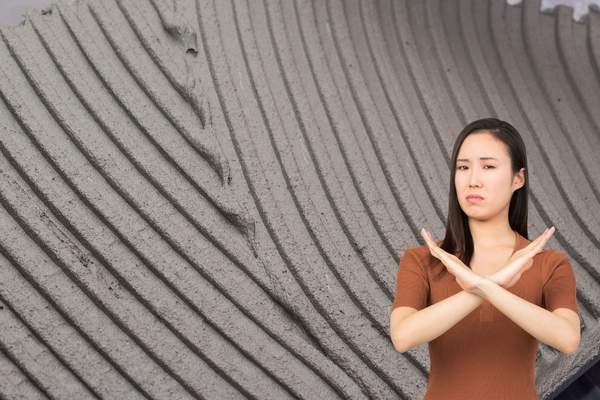
Thus far, you might have understood why many professionals do not recommend tile adhesive to level the floor.
Although it is possible to use a suitable thick bed adhesive, using the appropriate floor leveling method will help to avoid the risk of frequent repairs.
What is the Right Thickness of the Tile Adhesive?
It is common sense that when using tile adhesive for floor leveling, the thickness of the adhesive will increase as you will also use another layer to install the tiles.
Hence, this may start violating the general rule.
In general, wall tiling will require a 1 to 3mm thick layer of tile adhesive for sticking tiles. For heavy tiles, you will need to apply more glue.
On the other hand, for installing floor tiles, you will typically need 3 to 5mm thick tile adhesives. This may change according to the size of the tiles.
The Right Way to Level the Subfloor
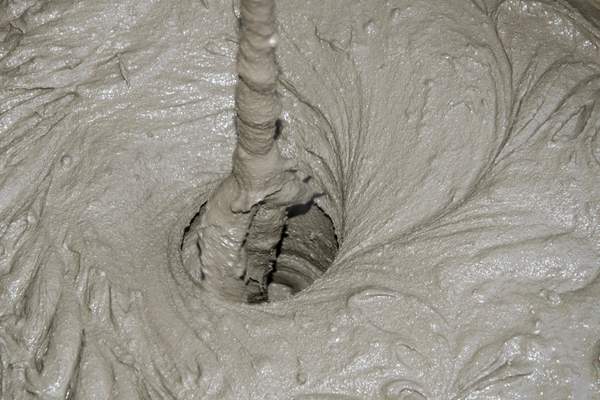
Self-leveling compound is the best method for leveling the subfloor. Follow the instructions below when leveling the floor.
- Initially, start sweeping the floor and vacuuming it. The floor must be debris-free, as the floor leveling compound will not stick to dust.
- Measure the size of the floor and calculate the estimated amount of floor leveling compound necessary for completing the task.
- According to the manufacturer’s instructions, start mixing the self-leveling compound. You can use an electric whisk or plaster mixer drill for mixing.
- Spread the mixture evenly on the subfloor. You can use a steel float to spread the compound. Feature the edge using a trowel.
- Allow it to cure well. Once the self-leveling compound is dried, you can start installing the tiles.
Note: Ensure you don’t spread a too-thin or too-thick layer of the self-leveling compound when leveling the floor. The proper thickness will be great.
Last Words
You may understand about using tile adhesive for leveling the subfloor. An even subfloor will simplify the tiling process and ensure a perfect installation.
In contrast, installing tiles on an uneven surface will ruin the outcome. Therefore, leveling the subfloor and patching the crack or hole before laying the tiles is essential.
Choosing the appropriate products for leveling the floor and installing the tiles is also important. Tile adhesive helps adhere the tiles to the substrate.
If you plan to use the tile adhesive for floor leveling, use glue with a maximum thickness of more than 11mm. Although you can use tile adhesive to level the floor, the best method is to use the self-leveling compound.
We hope this article was informative!
FAQs
Can I Use Mortar to Level the floor?
No, Using mortar for leveling the floor will increase the thickness and stabilize the product.
Hence, using the mortar according to the maximum thickness the manufacturer recommends would be best.
What is the Best Method to Level Subfloor?
Using a self-leveling compound to level the floor is the best way. This product will help balance the substrate perfectly.
Should I Clean the Floor Before Levelling It?
Yes, cleaning the floor and removing dust before spreading the self-leveling compound is essential. Although a self-leveling compound will adhere well to the surface, it will not work well on a dusty floor.
